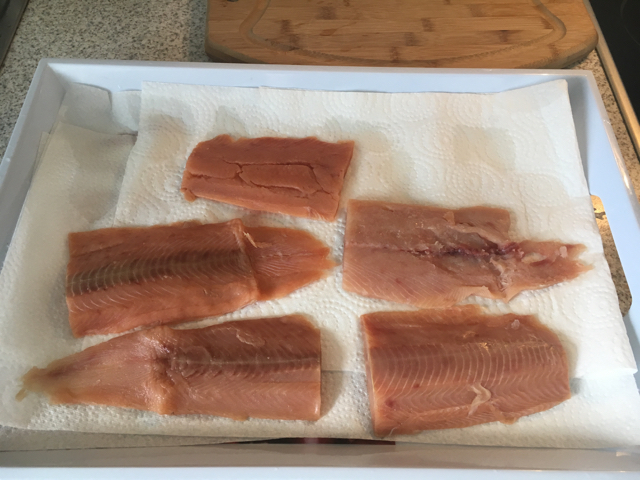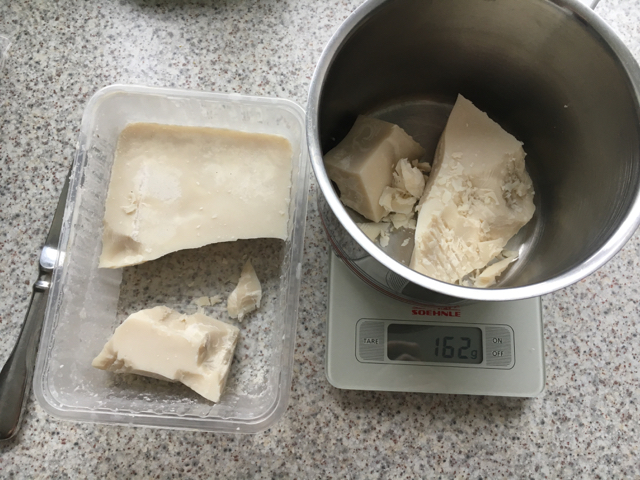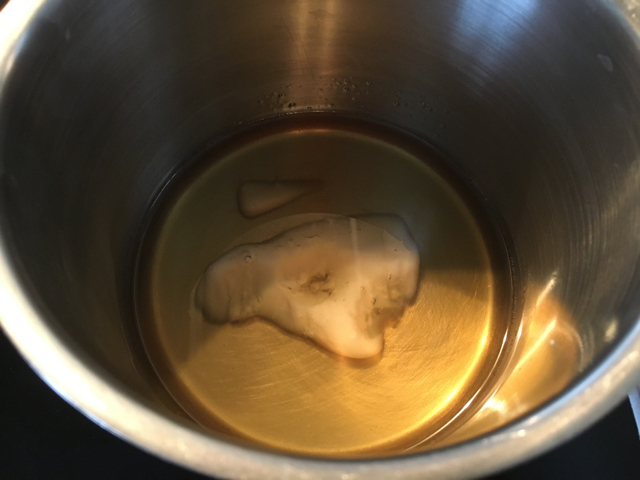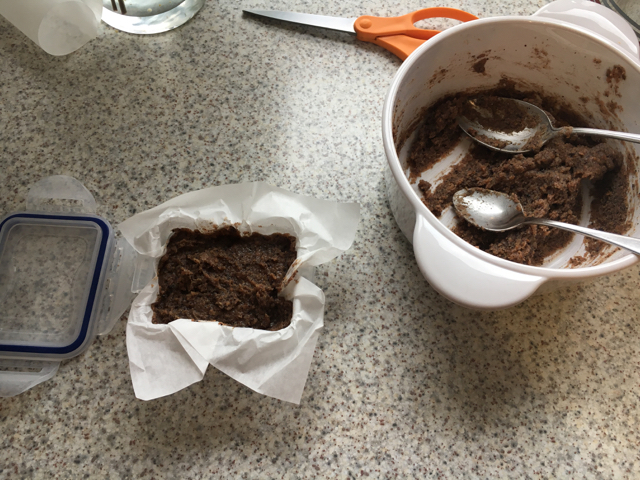Outlines of a Unified Evolutionary Theory of Human and Environmental Health
/Introduction
Healthy food and its production should be possible and mutually compatible. The components of what follows have been developing in the world for a long time, but in obscure corners. Now, aided by the incomparable power of the internet to spread heretical information, these insights are spreading. Evidence is being collected and disseminated in unprecedented ways. Here, they will be presented as parts of a synthesis, in which each part reinforces the others. A page of recommended resources to follow up on each topic is linked at the end.
1. Evolutionary health perspectives
Technological progress has many benefits. Yet some aspects of older styles of life, including patterns of sleeping, eating, and moving, and also aspects of food production, may have been healthier for people and environment alike than typical modern versions. Rediscovering and re-engaging some of these could raise health and well-being today.
The principle of evolution by natural selection revolutionized biology. Evolutionary theory can also help sort out the deeply confused and corrupted modern field of nutrition, though not on its own. There are several lines of evidence to go with it: biochemical pathways and interactions, controlled nutrition experiments (not epidemiological studies, which are both commonly performed and mostly useless), and archaeological and anthropological investigations of hunter-gatherer groups.
The illusion in hunter/gatherer mortality statistics
Inupiat Family from Noatak, Alaska, 1929, by Edward S. Curtis.
One line of evidence is research on hunter/gatherer populations conducted prior to their taking up modern practices such as eating sugar and grain and sitting around a lot and snacking. Some of this research was conducted by Weston Price. These groups were found to be either free of or far less subject to the “diseases of civilization,” including cancer, diabetes, heart disease, strokes, cognitive degeneration, and chronic joint and tooth decay.
A popular image of hunter/gatherer groups is that their lives were "nasty, brutish, and short." Quoting statistics on low average life expectancy among such groups is a favorite maneuver of casual critics. But such numbers conceal more than they reveal. Non-dietary factors in pre-modern life collapse the averages. These other factors include rampant infant and childhood mortality, death of mothers in childbirth, predators, prey fighting back, fights and battles among rivals, accidents and resulting infections, and infectious diseases. The overwhelming factor behind improved average life expectancy in modern times is the alleviation of such tragedies as these, above all, large numbers of babies dying before age one. Changes in such data tell us of the effects of modern hygiene and medicine. However, they tell us nothing about what we are investigating: What are the effects of nutrition and lifestyle on health and long-term degenerative conditions?
Evidence suggests rather that hunter-gatherers who survived the diseases and battles of youth tended to live long, with high awareness, robustness, and capability and little to no sign of the many and varied degenerative diseases afflicting moderns. The simplistic idea that they did not develop these diseases only because they died too young to suffer from them does not hold—the ones who lived long did not develop them either!
To The Primal Blueprint and beyond
Although I had been interested in healthy eating since my teen years, and spent a number of years as a vegetarian, the book that marked a sharp shift on my path of research and personal experimentation was The Primal Blueprint by Mark Sisson, which I read in October 2010. This book presents a blend of open attitude, systematic information, and a balanced, principled approach that goes beyond nutrition to exercise and other lifestyle habits viewed with an evolutionary lens.
Other works soon informed my perspectives through phases. I transformed my approach to nutrition and exercise step by step based on new information and experiences. I, like quite a few others, have passed through trying primal and paleo approaches, LCHF, and fasting. I have now moved on to a largely zerocarb approach.
Beyond these many food and training changes over the years, I also took steps such as using software to alter computer and phone screen color temperature according to the time of day, switching to a standing desk for some types of work, using a sunrise-simulation alarm clock, and limiting smartphone reading in the sleeping area (audiobooks allowed). I think such measures helped improve sleep quality and reduce eye strain. Finally, I have discovered important insights into agriculture and environmental issues that connect these personal themes to larger-scale issues.
2. The Metabolic Power of Not Eating
Some key insights about nutrition come from surprising source: the practice of not eating sometimes, or fasting. A recent puzzle piece fit for me and many others has been to reduce “eating windows” and more consistently practice intermittent fasting (IF). It turns out that a positive health-promoting intervention is to just not eat for various periods, for example, 16 hours, 23 hours, or 35 hours, with occasional longer stretches (each person should consult with professionals before doing this, especially if already on a medication that might have to be adjusted).
IF can be done intentionally. However, many practitioners of very low carb and zerocarb diets report spontaneously not being hungry for long periods. In this case, IF becomes partly an outcome of the eating strategy, not just an intentional practice. That said, being consciously open to IF allows one to more easily capture natural fasting opportunities that arise when hunger is absent.
Fasting traditions have been around and recognized as health promoting for at least thousands of years worldwide. However, a contemporary challenge for the practice is that no one is positioned to profit from promoting and supporting it—except the person doing it. There is no special food to order and no special drug to consume. There is no product to be hyped and promoted as the wonder cure. The cure is what is not consumed. Via negativa.
Already being fat-adapted and in ketosis makes fasting easier. There is a certain freedom from always being locked into having to have that next meal or snack. While adaptation is required—anywhere from days to weeks and beyond—once adapted, myself and many others have reported consistent benefits from nutritional ketosis, fasting ketosis, and their interplay.
Fasting may be viewed as a way to intentionally replicate a "bad-hunting day" from the paleolithic past. Of course, no self-respecting paleo hunting group would have decided to have a bad-hunting day, but they would have had some anyway. Our metabolic systems would have adapted to these periodic fasts, would have come expect them. Yet today such pauses are largely missing. Moderns in search of optimal health may have to take steps to reintroduce them, this time on purpose.
When a bad-hunting phase lead to hunger, one should expect our bodies to send the following message: get out there and hunt, and hunt more effectively than lately. That means: more energy and enhanced concentration and attention. It does not mean getting cold and depressed in the cave, a path to non-survival.
The modern approach to dieting—reducing calories while still eating the same regular meals, just smaller ones—has a set of effects opposite to the positive affects of fasting, Dr. Jason Fung argues in The Obesity Code (2016). With chronic low-calorie dieting, metabolism sinks, energy and concentration fall, hunger is constant, and one feels colder. This is the opposite experience from fasting (especially after adaptation). However, it is this “eating less,” as opposed to true fasting, that is the one doomed constant in almost every failing modern “diet.” A central reason for this difference is now understood from controlled trial and biochemical research, Fung argues: the two conditions have completely different impacts on the key phenomenon of insulin resistance. Fasting improves it.
This section has suggested the importance of not eating sometimes. Next, when we do eat, what should be on the menu? What should humans eat to thrive?
3. The Zookeeper's Dilemma
An inverted Zoo. Which are in better health? (Photo CCBY Greg HewGill)
Imagine you are a zookeeper. A clear and pressing question about each animal is: What do they eat? To maintain healthy animals, the first priority is to try to replicate what they eat in the wild. Feeding carnivorous lions rice cakes and herbivorous zebras fish cakes will lead to sick and eventually dead animals on both sides of the fence.
One sign that something is very wrong with modern human diets was expressed by Dr. Barry Groves. He pointed out that although we observe a great deal of chronic and degenerative illness among modern humans, this is largely unheard of among wild animals. However, it is seen among captive and domesticated animals, specifically, animals that are being fed the wrong food.
So what do humans eat? Are we likewise being fed the wrong food?
Well, we eat a great many things, but that does not really help our inquiry. So what is the next question?
In caring for animals, one would ask: What do they eat in the wild?
But again here, with few exceptions, humans today no longer live "in the wild" in any helpful sense, so this kind of information is also not easy to come by. Nevertheless, it is possible to investigate what ancestors of modern humans ate when they much more nearly lived "in the wild" during long, evolutionarily formative periods, say, 50,000–100,000 or more years ago.
Answers to another question would also help: What kinds of foods do we thrive on? Humans are able to eat a wide range of food and survive doing it, but what would be ideal? This shifts the emphasis to what foods humans do best on indefinitely versus merely what they can manage to stay alive on for some years.
This is a subject of extensive medical research. Sadly, much of it is flawed due to over-reliance on study designs that are incapable of demonstrating causation. Such often confounded and poorly designed "studies," however, are far cheaper to fund and then use as the basis for getting another paper published. They also form endless fodder for journalistic articles summarizing such papers, gathering clicks while further distorting what the research itself can legitimately be said to support (usually not much).
Thus, another "evolutionary" influence on the field of human nutrition is "publish or perish," both for researchers and journalists. "Arrive at the truest answers and explain them accurately" is far down the list of priorities in this system. Another angle is "follow the money." Much of it traces back to funding from pharmaceutical and "food" companies with, respectively, overpriced pill bottles and boxes of cheap food-like substances to peddle.
Highly meat-leaning
Balancing a number of different lines of evidence, I have arrived at the view that humans are basically carnivores that can also survive on plant foods as a fall-back. That is, they can survive on plant foods even for long periods, but cannot do so without suffering degenerative harm. Feeding humans primarily—and especially only—plant foods causes them to become gradually malnourished, to sicken in a variety of ways, to "fail to thrive."
This tends to be obscured for two reasons. First, such degeneration can take years and decades to progress. Second, moderns who move toward vegan diets often report feeling better, so those diets must be good, right? Third, a few people seem to do well on vegan diets even over quite long periods and these are cited as counter examples (while most of the others just suffer through or quietly quit).
On examination, however, new vegans are quite often reporting feeling much better after moving away from something rather specific—modern diets of processed foods. They are not moving away from an ancestral diet rich in fresh fatty meat, which is also already free of processed foods. After a few years of veganism, however, with some exceptions, many find their health and mood deteriorating and are forced to quit.
Just because something is better than something else by some measures, such as feeling better or losing weight, this does not necessarily mean it is also ideal or even good. It might just be less bad than something else that came before it. A conventional processed-food diet is quite bad indeed from a health standpoint. Almost anything could be an improvement over it. As for veganism itself, with some exceptions, a typical long-term vegan is both thin and sickly and will soon list up their many and varied health challenges, which they hope in vain that the next concentrated plant supplement might fix. Actions, and diets, must be judged by their results, not only their intentions.
It may come as a surprise to many that tens of thousands of modern humans have eaten meat exclusively, some for many years, many swearing by the dramatic health benefits of the change. Many only arrive at this protocol after having tried all manner of other methods that did not work as well for them, or that even worsened their conditions. We may not yet understand exactly how or why this works so well for so many, but the accumulating number of case studies leaves little doubt that this must be investigated far more carefully than it has been to date.
4. Best for people and environment
If it is true that meat eating is the best human diet for health, another question follows. How could large-scale meat eating possibly work for a modern society? Tiny populations of paleo hunters could do it, but they were working with massive roaming herds, and many of those species went extinct! Besides, isn't meat production already bad for animals and the environment, even without being expanded further?
That they are is a clear impression given in the popular press as "settled science," so "settled" in fact, that no one even bothers to call it settled. Questioning it would be a pure heresy of the worst kind. So let us proceed to do so.
Although the belief that meat production is bad for the environment has become quite popular, the balance of evidence I have seen indicates that this view is severely misguided. To explain this, we must turn to some still different perspectives and sources not directly related to nutrition.
The view that fatty meat is the healthiest primary food for Homo sapiens—that we are basically carnivores that also have a nifty ability to fall back on plant foods in a pinch—raises a wider issue. If this were true, how could modern food production possibly shift from serving carbohydrate-centric to animal-fat- and protein-centric eating patterns on any large modern scale?
Virtually unquestioned conventional wisdom insists that not only health, but also "the" environment dictate lower, not higher, reliance on animal products. The truth, as is surprisingly often the case, may be the exact opposite. Indeed, even separate from human nutrition issues, properly managed large herd animals might be the only way to halt and reverse the large-scale environmental destruction caused by modern plant agriculture and poor land management. Moreover, whatever environmental destruction caused by grain agriculture for feeding ruminants cannot be blamed on the cattle. They naturally thrive on grass rather than grain. And they can eat grass all by themselves; that's just how they roll.
The key insight is that large heard animals and vast stretches of grassland coevolved over geologic time. They came into existence and thrived as part of a single ecological system. One of the last modern examples of this was the unending sea of bison encountered by the early European explorers of North America (before some of the pioneers systematically exterminated the animals, also further undermining cultures that had long subsisted on them).
Decades ago, Allan Savory set out to answer some pressing ecological questions. He arrived at the view that the most important and underestimated global issue is the mass desertification of grasslands. And he argues that there is only one way to effectively alter the process.
Savory's breakthrough was to discover that desertification has not been caused by “overgrazing,” as is usually thought, but by mis-grazing. Earlier effects of mis-grazing were then reinforced by misguided herd reduction or removal, which made the problem still worse, not better. More animals, properly managed, not fewer, would have been the solution. Today, he and his institute teach methods of using proper management of herd animals to recover desertified land and transform it into far more biologically productive pastures using know-how assembled under the heading “holistic planned grazing.”
Holistic planned grazing, in my view, constitutes an evolutionary approach to land management. It recognizes and builds on the ancient co-evolutionary interplay between grassland flora and large fauna. Large herds kept themselves moving across grasslands—fertilizing and tilling along the way—while staying grouped tightly to defend against predators. When they moved on, the land and flora had plenty of time to recover and regrow. The right know-how on the part of herd managers can replicate these dynamics without relying on predators to shape herd movements.
As Savory's methods have shown, such properly managed pastures naturally retain rainwater through the grass, soil, and other life that grows there, all in an evolutionary dance with the same types of animals those grasses themselves co-evolved with. Vast surfaces of the earth were once covered with thriving grasslands occupied by roving herds of untold millions of beasts. Holistic management provides a way to recreate habitats that mimic essential elements of this past in an efficient modern way. A fundamentally biological problem requires a biological solution, Savory argues, not a chemical or an industrial one. On this basis, by the way, we can already suggest that "lab-grown meat" would just further contribute to environmental problems that a vast resurgence of real animals, properly managed, could help solve.
This would happen to produce a large potential population of animals thriving in environments quite natural to them. They might then also contribute a major, nutrient-dense, modern food supply. Dr. Michael Eades arrived at a similar view after a thoughtful review of Savory's ideas and critiques of them (2 Jul 2017). He provides an exceptionally clear description of these practices. Moreover, it is politically notable that herding can be more decentralized and distributed than mass grain agriculture, enhancing local self-reliance and independence.
White Oak Pastures in Georgia, USA provides one inspiring example of transformation of a formerly conventional ranch. Using multi-species holistic management, it has not only recovered burned-out agricultural land, but has also breathed new life into a town that had been nearly deserted.
Healthy grasslands, herds, and nutrition
The foods most destructive to human health have one thing in common. They are mass agricultural crops. Sugar, wheat, and corn top the list. All of them are subsidized by governments. All of them are promoted by official dietary guidelines. All of them are highly profitable for “food” companies.
And all of them kill and maim. They just do so insidiously through their contributions to chronic systemic inflammation, excess weight, diabetes, heart disease, cancer, arthritis, depression, suicide, and the modern conditions of cognitive degeneration. They are central to feeding an endless supply of sickened people into modern "healthcare" (sickness management) systems. Chronic, degenerative conditions provide much of the business for the highly profitable pharmaceutical and healthcare industries year after year. Sick people, flowing money. Who wins and who loses? You lose.
Both anecdotal and increasingly also formal evidence continues to build for beneficial roles of fasting and very low-carb and zerocarb eating in treating, and especially preventing, the entire spectrum of modern chronic ailments. However, the interests that can gain from such practices—at the strictest baseline, sellers of meat and water—are far more dispersed. Their influence pales in comparison to the concentrated financial, media, and political resources of big food plus big pharma. Billions go to conglomerates selling cheap carbohydrates mixed with toxic plant-derived oils. Billions more then go to companies selling all manner of drugs and aids, which seek to manage the chronic damage accumulating from the consumption of such alleged food.
Nevertheless, from outside of this sorry system, an unexpected larger picture is emerging, one precisely opposite the popular hypothesis that mass agriculturally based vegetarianism is best for both human health and the environment. This is the hypothesis that distributed, holistically managed grazing and carnivory are best for both human health and the environment.
The low-carb/high-fat and paleo-oriented nutritionists on the one hand, and the ecological herders on the other, have independently arrived at different pieces of a single puzzle. The synthesis of these streams of thought and practice has profound implications. The results suggest a food system based around a modern planned pastoralism enhanced with holistic management practices that mimic the co-evolutionary conditions of grasslands and herd animals.
Summary claims of a paleo-carnivore/holistic management synthesis
Humans tend to live best mainly on a blend of fatty acids (fat) and amino acids (protein) derived from animal products. Animal products are the best sources of energy, structural materials, and highly bio-available micronutrients for humans. In contrast, eating large amounts of carbohydrates, especially processed ones, and artificial industrial foods such as seed oils, produce gradual metabolic derangement, foremost chronic insulin resistance and its many associated degenerative conditions. Even vegetables, generally considered the unquestionable banner of good health, lack much usable nutrition at all per unit of weight and carry a range of irritants and anti-nutrients (chemicals that block the absorption of nutrients), evolved in a chemical warfare strategy to protect them against being eaten by punishing those who eat them.
The best single source for the nutrients humans thrive on is large herd animals. Seafood is also a good resource, though generally lower in fat (a con, not a pro). Early Homo sapiens and some of their cousins may have contributed to the extinctions of many of their preferred larger, higher-fat species long ago, such as paleo elephants and mammoths, but we still have cattle and buffaloes, which work reasonably well. We also now have property rights (to some degree), which defeat tragedy-of-the-commons overuse issues. Notice the word commons in the phrase "tragedy of the commons." It is there for reason: the tragedy happens when legitimate property rights are too poorly defined and defended.
The best way to halt and reverse mass desertification and alleviate related water crises is to manage large herds in ways that sufficiently mimic the natural movement patterns of their original evolutionary contexts. This is also so independently of food production and human health issues.
Humane and holistic ranching practices provide ideal living environments for herd and other animals. Compared to their evolutionary contexts, animals on holistically managed multi-species farms are protected from random and violent death from predators. Their supplies of food and water are reliable and secured.
Mass grain agriculture practices lead to mass destruction of wildlife and long-term soil deterioration. Some of this grain is fed to animals. Grain feed-lot methods are associated with poorer health and living conditions for animals. The grain system replaces multi-species environments with monocultures, which are vulnerable to disease and soil degeneration and require constant attention, often including irrigation and farm machinery, to prop up. In contrast, cows eat grass all by themselves and grass grows all by itself (a little help from holistic management better replicates natural herd movement patterns that co-evolved with predators to support natural grassland water retention, even in dry climates).
5. Implications
A concluding summary must be far, far shorter than the journey itself. For understanding of food production: biological/ecological problems require biological/ecological solutions. Understand where plants and animals have come from and how they co-evolved, then apply that understanding to modern practices. This includes herd animals, grasslands, and people too! For personal use, the principles are: eat meat, drink water, lift heavy, sleep, play, and sprint once in awhile. These are quite reminiscent of Mark Sisson's Primal Blueprint laws, but the ones on food are further specified.
These practices appear to have dimensions beyond physical pragmatism. Many who have tried a plant-free diet for a sufficient period to transition (30 days is often recommended for a trial) have reported profound health and well-being improvements, not only in a range of physical conditions, but also in psychiatric and emotional difficulties. One practitioner in 2009 described the improvement in emotional state after starting an all-meat diet thus: "The noise has stopped and the music has begun."
Many also report a profound sense of freedom from former obsessions with food. All of the decision fatigue associated with whether to eat this or that, when, and how much, vanishes. Former cravings decline and eventually fade. Faced with foods that one had previously considered objects of craving, it is hardly possible to believe that one actually ate those things regularly in the past.
Hours formerly spent on food can now be spent on engaging productively with the world and pursuing one's missions. As Dr. Shawn Baker put it, “If you look at any other animal on the planet, they aren’t looking at a menu and scratching their head.” As human animals with oversized brains and imaginations, we all have better things to do than spending inordinate amounts of time managing and balancing a long list of plant addictions. Freedom from them is possible. The power of being human can be unleashed from the travails of plant-consumption/plant-addiction management.
Hunters act and act smartly. Human hunters have thrived to an apex level through our wits and ability to work together. The "apex diet" is both the origin of this capability and continues to support it today.
I kept references in the text to a minimum for readability. The following page provides links to some of the best resources I have found on these subjects, including papers, blogs, articles, and lectures. To follow up on the many topics and perspectives in the foregoing synthesis, continue with Evolutionary Health Resources.
[This article was revised from its original version, mostly shortened and revised for clarity, on 2 July 2018].















